Cart
You have no items in your shopping cart
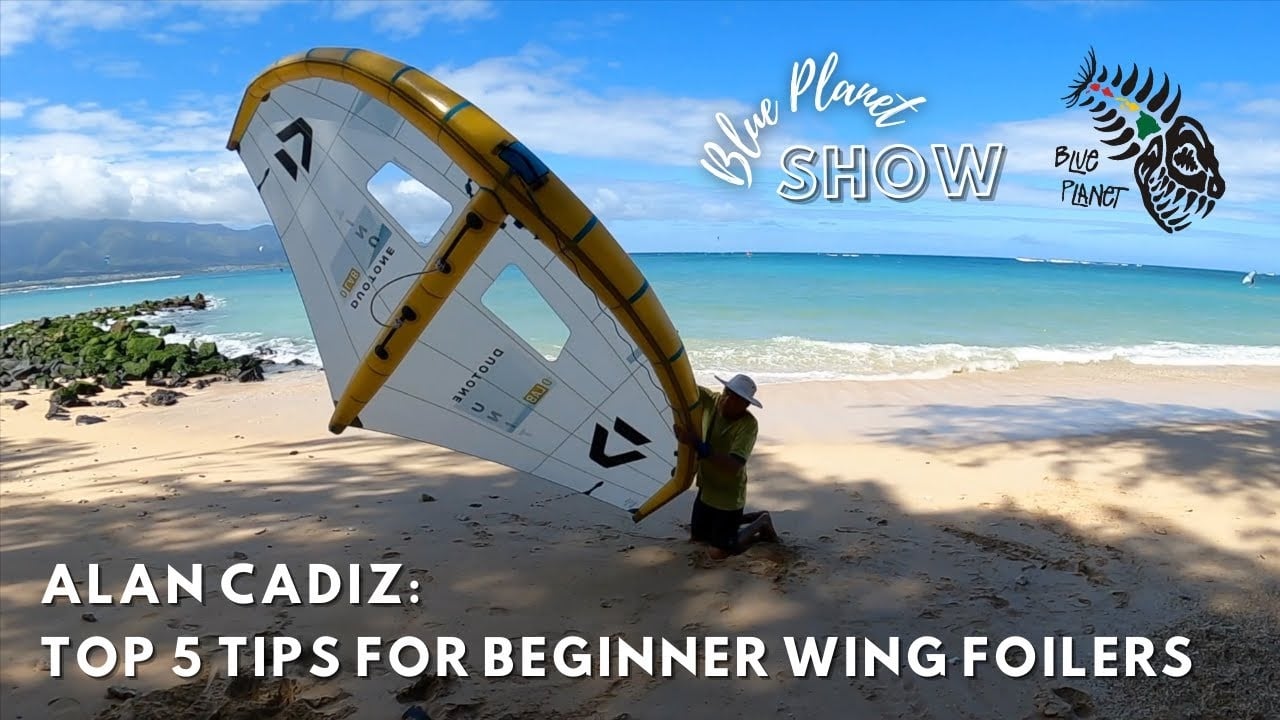
In this video, Alan Cadiz goes over his top 5 tips for Wing Foiling Beginners, the best way to learn to foil
If you want to Learn to Foil, Wing Foiling is your best (non-motorized) option.
These are Alan's Top 5 Tips for Wing Foiling Beginners:
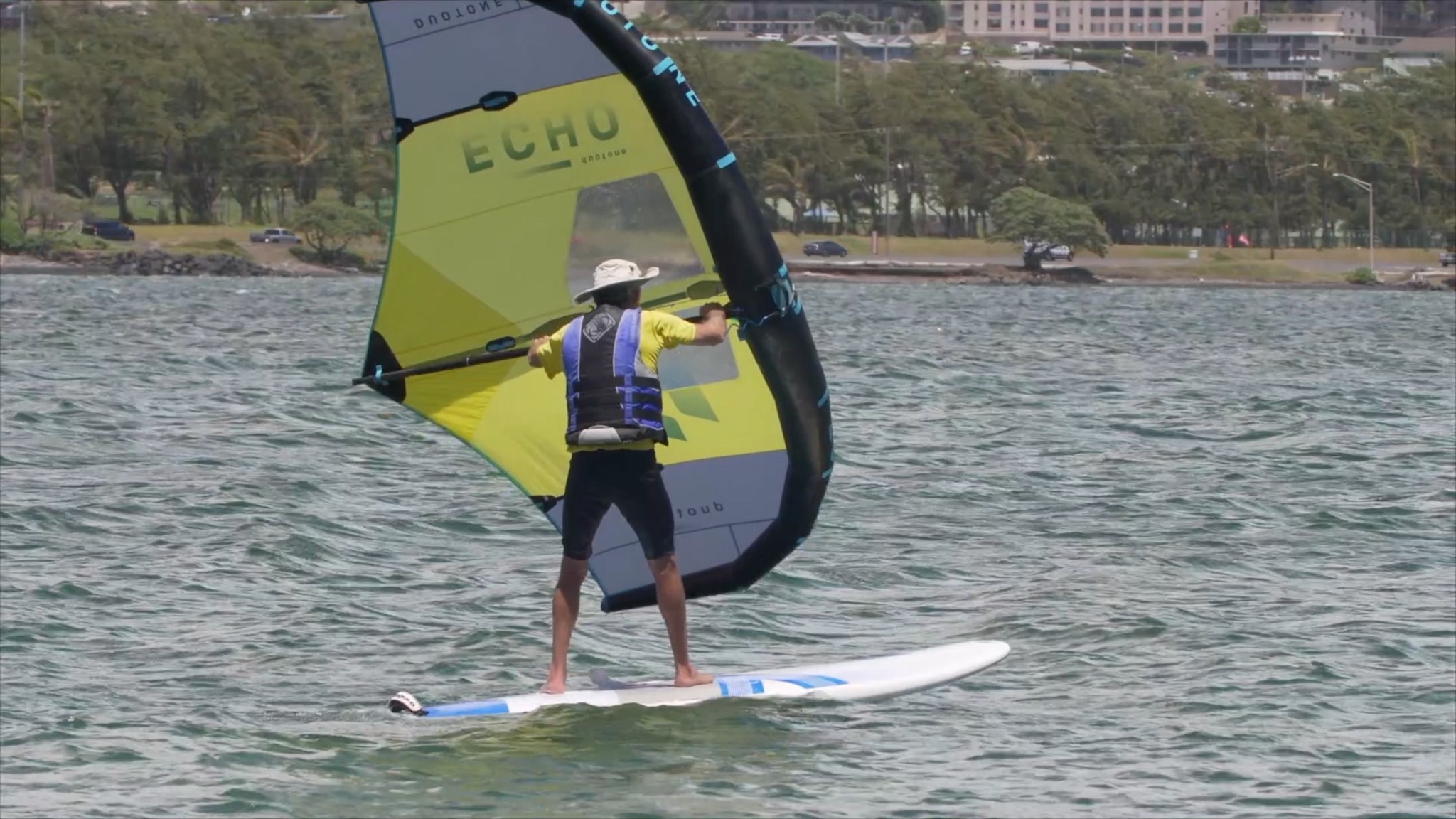
1) Learn wing handling on a big, floaty board with daggerboard before getting on a foil board and/ or use a big, stable foil board to learn on.
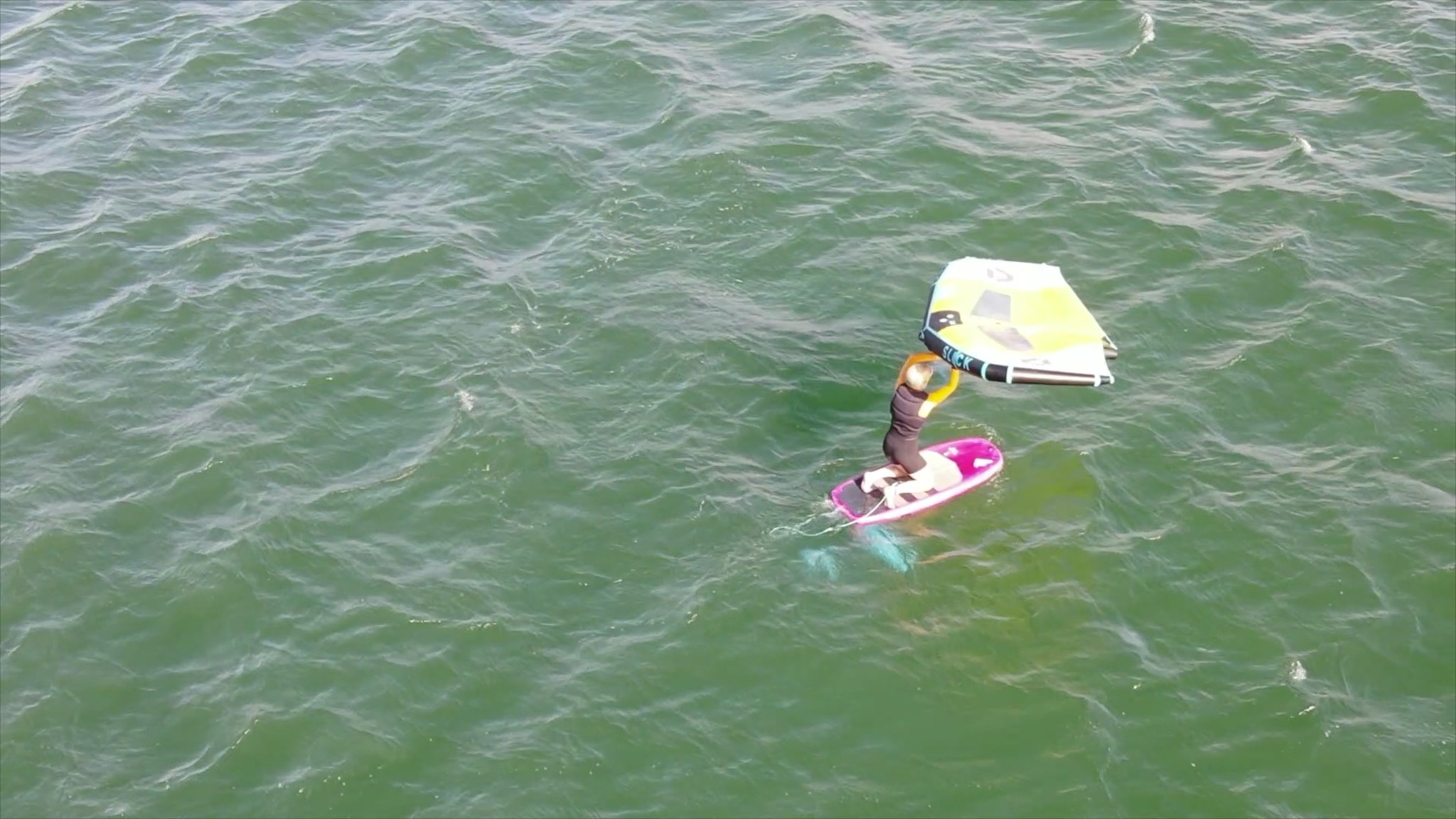
2) Learn to steer the board and turn around close to the beach, don't go out too far only to find out you can't go the other way. Beware of off shore winds!
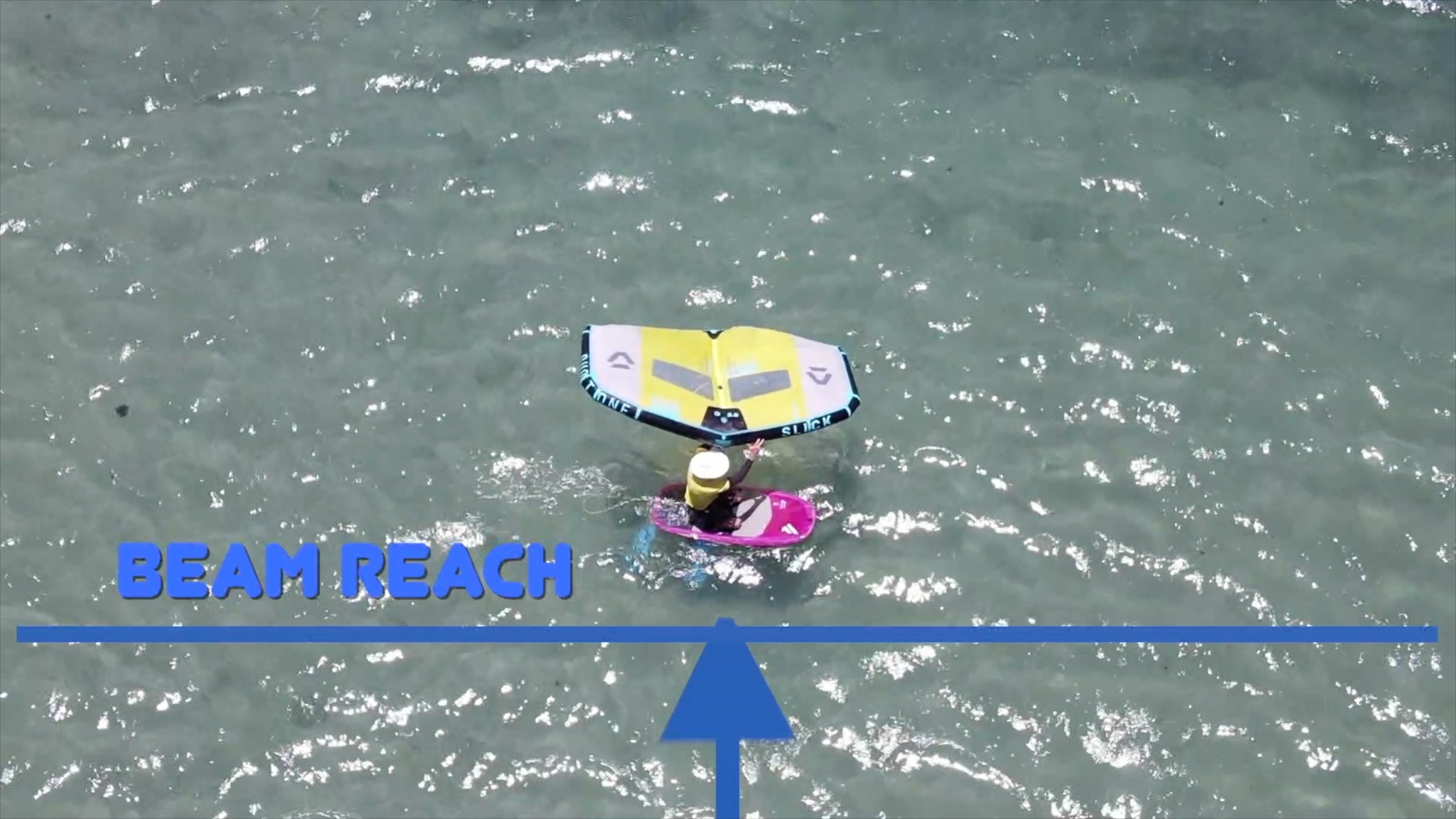
3) Learn to use the wing to steer the board. Think of the strut as a weather vane that wants to point straight downwind. You can use it as a rudder by twisting the luffing wing with your core to steer the board.
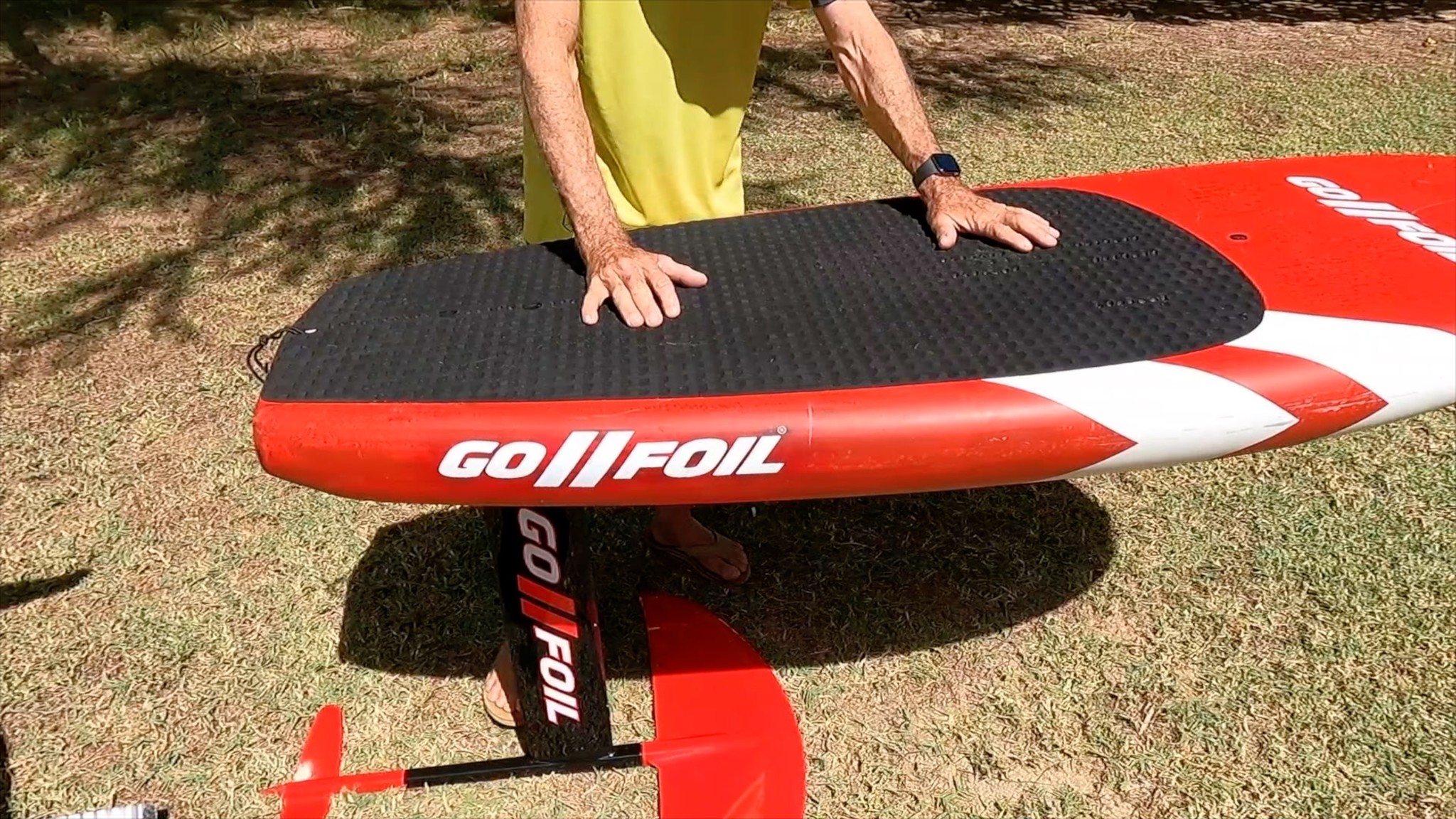
4) Foot placement: find floatation point (front to back) on the board before coming up on foil, adjust foil so floatation point aligns with center of lift of foil. Use visual or tactile markings on the board to mark the foot positions. Balance weight over center line of board before coming up on foil.
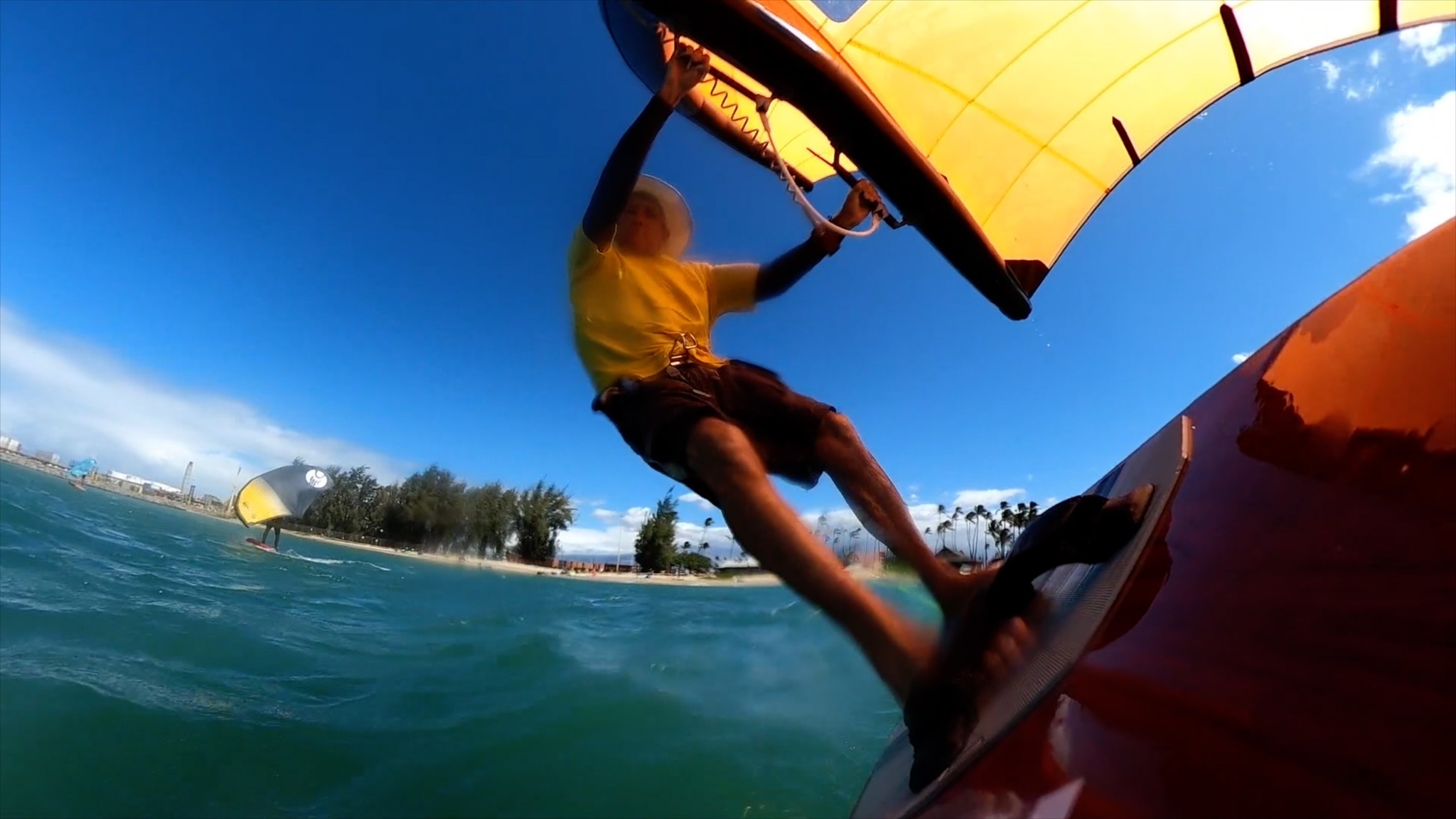
Keep weight in line with the mast. If weight is not balanced over foil, eject quickly to avoid falling on foil, don't try to "catch" your fall.

5) Wing handling- practice controlling the wing in steady wing before getting on the water. Practice flipping the wing over from the wing tip, controlling the angle of the wing, powering up the wing with the tip close to the ground but not touching, how to bring wing back up if it touches so it does not flip over, leaning against the wind, and practice hand movements in jibes and tacks.
To watch the full interview with Alan Cadiz: https://youtu.be/squzSdZp5wM Alan's Patreon Channel with detailed instructional videos: Patreon: https://www.patreon.com/AlanCadiz/posts
Watch the "Wing Foiling: Top 5 Tips for Beginners from master instructor Alan Cadiz on the Blue Planet Show" video here:
Wing Foiling made easy using step by step instructions. Don't be fooled, foiling is not as easy as it looks and jumping on a foil board with no instructions can be dangerous, so please take a lesson or follow these instructions to learn this awesome sport, step by step.
Transcript of the video:
I asked you to come up with your top five tips for beginners to get into wink foiling. And you not only prepared some answers, but you've made a little video from what I understand. So let's start with that. What are your top five tips for beginners? All right. Thank you. Yeah. So I was thinking about those tips and there's so many different things.
But I've tried to think about the key things and I put together a little timeline video here. Tip number one. And I just pulled these clips out of my inventory of clips and start on a big board. Now this is a winter Ford. We have a surplus of wind surfboards here on Maui on you can, you might think a sup board would be a good substitute, but you really need the daggerboard unless you can put strap-on fins on your support.
I don't recommend using the support. It really needs to have something with the daggerboard now. And I recommend this for people who are just learning, how to use the wing, just to learn the basics on you can learn on a set board a foil board, but I recommend a large foil board to start with.
Here, I've got Frank my, my pay here. He's a very skilled. And using a smaller board. It's challenging. So as a beginner, if you're on a smaller board, it's pretty tough to get going. And, in the extreme case, a really small board, it has its advantages, but it's tough to get up on the smaller boards and this is goes through the whole spectrum.
So as a beginner, you really want to have a floaty board is just more challenging to get up. There are advantages to the tiny board once you're up. But in the learning stages, you really want to have a floating board. Yeah, I totally agree with that. So that's tip number one. So not everyone has access to the big boards on and.
It doesn't because the learning curve is so fast. It doesn't always make sense to buy a big board. Maybe for some, they've got a big family or they've got a slow learning curve or they're sailing in light wind, but if they have the option to rent on, I would encourage that for the first, a few runs on a mistake that a lot of people make is they'll run out and buy the board that they think they're going to end up on, maybe an 80, 80 liter board.
And it's a real struggle to learn on those smaller boards. You can do it, but it just takes a lot longer. So if you have access to a bigger board take advantage of. Yeah, very good. And then I just wanted to mention too, for people that have an old standard board or something, a big floaty signup board, there is a kind of a stick-on center thin daggerboard available from Slingshot.
I believe that you can basically glue onto the bottom of your board and make if your board doesn't have a dagger board. And that makes a big difference because it keeps the board from this going downwind. If you only have the fins on the tail, the boards is going to turn down when, and it's going to be very hard to stay cross winds.
I've seen people show up at the beach with the sup board and have that problem where they just go straight down wind. So yeah, that's basically I as tip number one, before you try this foil, learn the wing handling with a regular board that doesn't have a foil on it, basically. Yes. And if you don't have access to that, you can, learn on a foil board, but really get your hands on the biggest foil board you can get.
Yeah. And I, I don't know if this is another tip you had to, but I'm also practice as much as you can on the beach before you get it on the water. The wing handling a lot of it. You can practice on the beach before, before you're in the water. Yes, I do have that. I think it's tip number four or five.
Okay. So tip number two, you want to learn how to steer the board and turn around? Very close to the beach specifically, learn to turn around before you get out there on, so this is my daughter she's she has an interesting technique. She'll kneel down at the end of her run, do the turn on her knees. So she doesn't fall.
And then stand back up. But the point is that you're turning around close to the beach. And when I say close, 20 feet out, get on the board and turn the board around 180 degrees to come back in. You don't want to get a hundred yards off shore and realize you can't turn around. Now I can keep going or I can keep going, or we can discuss that idea.
Yeah. I think that's a really good tip. I guess a lot, I know I've heard of people, like they were so excited about getting up on foil and be able to go there. They just kept going as long as they could before they fell in. But then when they got way outside, like in Hawaii, Kai, for example you realize, oh, I don't know how to go the other way.
Yeah. And why Kai is slightly off shore. If I remember. So maybe that's a tip in itself, you want to go in a place where it's side shore, if it's off shore wind, make sure you're sailing with a partner to keep an eye on you. Yeah. And then I'll also, it's a good idea to just if you have a place where you can just go down when, and maybe park your car at the other end, then don't have to worry about staying up when in the beginning.
Yes. This next clip is all about staying up wind. And this is something that when I'm teaching my students, I try to focus on getting them to go up wind for a number of reasons. And the biggest reason is that you're not downwind. You don't have to walk back up or find transportation. You spend your time sailing back and forth instead of walking back up.
So this next clip here is a little bit longer. It's actually a section of a video that I call maximum performance. This is the tip for beginners on turning the board up when, and this is one of my edited videos on, so I'll go ahead and play the whole thing. It's about two or three minutes, and then we can stop and talk about it.
Okay. Great. One of the things I want to cover with quickly, this is more of at the novice level. And this is for almost the first time wingers. It's really easy to go down, wind and end up down wind very quickly. What I want you to try and do is turn the board into the wind.
This does two things. One is it gets you going up wind. So you're not losing as much ground. And it slows the board.
The struck is like a wind sock or a weather vane. It wants to point the wing into the wind. You can use this constant to leverage the board upwind or downwind by pointing the clue towards the back or front of the board. Respect. So we call the back of the struck clue or back end of the wing. And if I point that wing pointed down wind, it's going to point the board down wind.
So I want to point the struck behind or in this case to my left, the more I aim it to the left I'm pulling here. The more it turns into the wind.
If I push it away, it turns down with this is done while luffing the wing overhead and steering the board through your core.
If you come from a windsurfing background, you'll recognize this as similar to wind surfing in that if you drag the clue towards the tail of the board will turn up.
When you twist the wing toward the tail of the board, the wing wants to return to pointing into the wind and as it does it torques your body and board up wind. However, if you sheet in while pulling the clue back, the sheeting will overpower the steering effectively canceling the wings, torque to turn the board up wind, I'll say it again.
Over sheeting cancels, the upwind effort, move your hands forward or sheet out as you twist the clue towards the back of the.
You're going down when
you need the sheet, it out, turn it up when, and then start
simply stated left the wing. As you twist the wing to torque the board up wind.
I actually really like how you explain what the weather vain and that, when you pull it the. The strike wants to point straight down downwind. And then if you manipulate that'll give you a steering momentum. So I've never really heard it explained that way, but it like intuitively we know how it works, but it's hard to explain it to someone who doesn't understand that concept.
So I think that's a really good way to explain it. Thank you. I've been trying all different ideas, one way to think of the strep as a rudder or a guide. And you're aiming that guide to torque the board on a bunch of different ways to show it. And I even, I look at this and I'm like, oh, I might've might do that a little bit differently next time or try to explain it differently, which is I try to attack the idea from a different angle and try different ways.
And on teaching this to my students early on, I couldn't understand why they were going down when, what was causing it to go down when, and even myself, I couldn't understand what was the technique to get it, to turn up, wind on until I started well, trying to solve the problems at night, going to bed at night, thinking that why were they having trouble?
Why can't they do that? Yeah, I've been trying to capture it on video. Nice. Yeah. Okay, cool. I think we're ready for the next tip. Yeah. Okay. The next tip is more or less where you're standing on the board. So food placement on the board let's start with being off foil. So when you're slogging out to the wind line your front foot should be slightly on the Windward side and your back foot on the more or less on the stringer, as opposed to being this orientation.
This is going to actually set you up to point further down. Or that is it's harder to go up wind in this position than this position. Now, the next thing to determine is where to stand on the board regarding the board's flotation. So you may be comfortable standing in the front, but if the nose of the board is curling, you need to move back.
On the other hand, if the tail is sinking, you need to move forward. Again, this is off foil. And once you find that flotation point, you want to adjust your foil so that you stay in this position, as it comes up on foil, you can't be stepping forward as it transitions to on foil. So you want to have your feet in the spot when it foils.
Okay. One thing that I've done in the past with some of my boards is I've marked on the board. Some lines just as a reference for. So I have an idea of where to stand before foils. Ideally you want to be comfortably on the flotation, but when it foils, you want to make sure that your foil is matched with that flotation point and having marks on the board, just give you a better idea of where to place your feet.
Yeah, exactly. And if the D or does design well and you and your files in the right place, basically where you stand to float in the center of flotation, that should also be more or less where you want to stand once the board lifts up, right? Yes. Yes. You can put the foil too far forward in the track or too far back, or if you have a foil with a lot of lift in it on, you may have to adjust that, but.
Yeah and then another good point you add it. And then in a different video with the was being centered over the center line of the board to cause you might be able to fly on when the boards on the water, if you're not exactly in the center, it's fine. But once the board lifts up and you're on foil, you have to be centered exactly over the foil the center line of the board.
And that's the next clip here staying centered. I do have in this shot here, you think more of front and back where you're pressuring the nose down and you're kicking it up, but there's also the side to side. So that's this next clip here. Okay. We'll just play that whole thing.
Okay. Some people are afraid to learn to foil for fear of falling on the foil, a legitimate concern. So let's look at what causes this type of.
So let's look at the foil. It generates lift. The front wing is lifting up the back wing. The stabilizer is pushing down, but together there's force up through the mast lifting the board. Now it's important that you trim your weight for, and AFT. If it's too far in the front, you're going to stick to the water.
If it's too far in the back, you're going to overflow. So you're constantly trimming the weight and a half, but it's also equally important to keep your center of mass directly over the foil. So the foil is lifting up. Gravity is pushing you down and if they're equal, you stay centered over the board. But often as a sailor, you have another force that the sail is pulling you laterally.
So you need to compensate by leaning back against that pole. And when the. It's flat on the water. You have the stability of the ocean. So you can put lateral push on the side of the board, but as soon as it comes up on foil, you don't have that stability and any sideways push is going to cause it to in this case flip away and you fall towards the foil on your bum.
And here's a couple examples,
unlike windsurfing, where you're pointing your toes to keep the board flat in foiling, you're flexing your foot to keep your ankles at a right angle to the board, or that is your body. Mass is always over the top of the board. And the top means at a right angle.
I have this drone footage, which really shows it, centered right over the top of the board, even though he's hiked out he's on. And then here, if you draw a line from the mast up through his center of mass, you can really see it here.
So if you're not centered and I've got one more clip here of not being centered and you can see it right there. It's the beginning of the. Yeah, that's a really good point then. And I always like to tell people too, when they, before they try to wing and foil together, maybe just try to learn how to control the foil first.
I guess even going behind a boat though is sometimes you got to pull from the rope, so you can lean against the rope. So you can be a little bit off centered on, on, on the floor away from the pool of the rope, if you're going sideways. But but just to have that feel where you can, where you're foiling on the board without getting pulled or without pressure, so that you understand that you have to be right over the center line of the foil and you can't be like offset, yeah. Trying to isolate just the foil skills. Th the foil is one way, but the foil is different. The board is pretty heavy, so it's not as responsive. As a regular foil board certainly the prawns surfers that come to wing foiling, they have the skill already going behind a boat on is good.
But I have seen people that have learned behind a boat. And when they're out on the wing board, they're leaning back against the wing, trying to wheelie the board. And I'm like no, you can't leverage, you can't leverage the board like that with the wing, the way you can with the rope. But any foil time that you can get before you get on a wing is good.
Yeah, I agree. So the next clip here is about wing handling. And that is we talked about it earlier about practicing on the beach and here's just a few things on. A few things you can practice on the beach, simple stuff like flipping the wing over. And this is a six meter when I'm trying to flip a six meter wing over in the water is pretty tough.
So you can practice it on the beach. You can practice standing up, having the wing help you get to your feet. And the wingspan on a six meter, you have to go up to the wing tip to flip it over. So it looks easy and it's relatively easy on the beach. It's harder in the water, but that's something you can practice.
And just practicing, like for tacking or jiving, just practicing the hand movements of flipping the wing over on, just leaning back against the wind and the wind. And this is something you have to do where there's a breeze. You can't do it in your backyard where the winds all squirt. You really need to have steady wind to get steady feedback, but this is worth doing, taking the time.
And that there's in most of my instructional videos, I've got some kind of beach homework where you practice on the beach, whether it's the Heineken jibe or tacking or whatever. Yeah, no, that's really good advice. I think in a lot of times the beginners too, don't if you don't have a wig like a cutting or windsurfing or a sailing background just beginners have a hard time understanding exactly where the wind is coming from and how to angle your wing and relation to the wind and which way you want to go in and out, what's what direction can you go?
And what does. You can't, you can't go straight into the wind obviously, and things like that, that's things people don't understand at first, I think, or don't think about really. So just learning that. And then also I like to get people to just keep the wing tip, kinda get the wink to blow to the sand, but without touching it, like controlling the height of the wing on the beach, and that, that's something that, that I'm in.
I've got videos on that and all the clips here, this is just a fraction of the stuff that I have. And there's so much more there's so many more tips and these, I wouldn't call these the top five tips. These are just five tips in general on, and I also, the sport's still relatively young and we may look back in a few years and think, oh, we were teaching that progression where it's so much better to teach this progression.
There's still so much we're learning about the sport. Yeah there's there's definitely the idea of sheeting and steering the wing on, I've taken a couple stabs at explaining that in one video, I have one video up there already on what I'm going to. I have another video where I'm trying to explain it more clearly to sailors or non sailors, and just the idea of sheeting in and out to catch the wind and spill it.
That's relatively easy. But when you throw in the steering of the wing up and down in front of you, like you said, having the wing tip right on the sand and taking it above your head and separating those two skills it's a challenge to get people to understand that. It's really simple once you get it, but it's sometimes difficult.
Yeah, you have to grasp that concept first and the I, and I like to even the more advanced maneuvers and all the different tax and things like that on your patron channel, you have like really detailed info videos breaking it down. Step-by-step into really easy to follow steps that very detailed and, I highly recommend that your instructional videos are great, and I think, those beginner tips are great, not just for the beginners, but also for more advanced guys.
Cause you're going to have to show other help, other people that are learning and just understanding how to explain things like how to steer the board up into the wind. Th those are kinds of things. If you have a good way to explain it and to make it easy to understand that'll help a lot.
Yes. Yeah, that's good. My following on Patrion has grown almost a 700 at the moment, or just over seven to 700 at the moment. And the range of skills on, there's beginners on there that are just trying to get up for the first time. And then there's advanced sailors that are asking for jumping and more advanced stuff.
This recent video, the one you're looking at gliding on foil, that's more for entry-level. It's gliding is a skill that you take for granted, it's really easy to do once you know how to do it. But I had a number of students recently that I could see, they were relying on the wind for support and they didn't have the feel for gliding.
Yeah okay. So yeah, I just find it too. I'm just, screen-sharing this now you're at your patron channel and yeah, it's 747 patrons. That's great. Congratulations on that. So it's actually I guess if you get enough people supporting you, then it's actually, you can actually make a living, being a virtual instructor, basically.
Just making the instructional videos and teaching. Yeah, I so that, that seems like it really good business model for you, huh? I fell into it, with COVID when they shut down all the restaurants and airplanes and they closed the beach parks. That's when I started doing this and someone suggested I do a premium online video here on Patrion.
And so I've been doing that for the last almost two years now. I think there's 20, 22 or 24 videos, instructional videos ranging from. The first time holding the wing to more advanced stuff like three sixties and Heineken jibes and that kind of stuff. Heineken jibes and the three sixties.
That's probably the top 10% of wingers out there. I think the majority of wingers are working on basic stuff like this jibe here, that's George, one of our local sailors. This came to wild, demonstrating how to glide on the swell on. So this is a clip from the wave video on. So there's all different skill levels here and I've tried to try to address all of them.
Thank you for watching, remember to have fun and enjoy!
Aloha, Robert Stehlik and Alan Cadiz
Good question. Wing foiling can generally be done in less wind than you need to get planing on a windsurfer. The wing size in sq meters is generally a bit smaller than what you would use for windsurfing. Several manufacturers have charts for wing size depending on wind speed and body weight that can be useful but it also comes down to personal preference, board and foil used, skill level, and if you prefer more power or better handling.
How do you decide what size wing to purchase if you are an old windsurfer but beginner wind foiler